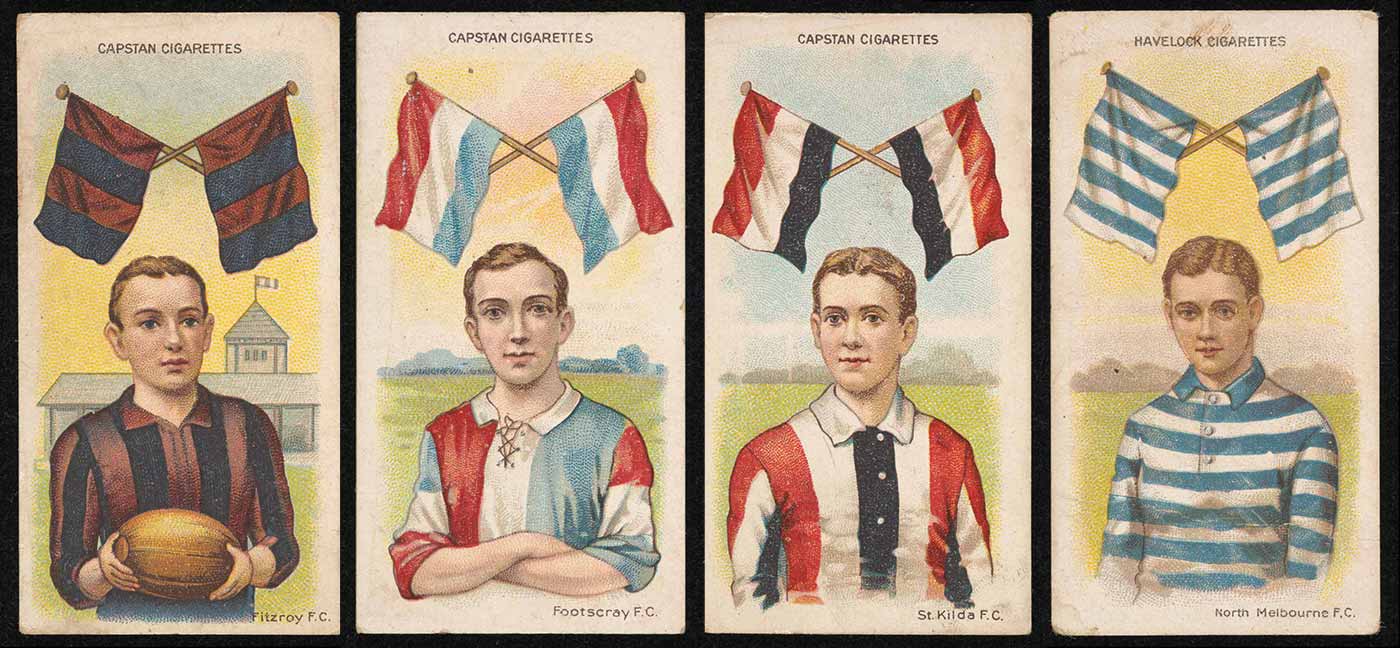Argus, 26 September 1913:
There is great enthusiasm in the seaside city at the prospect of premiership, and when the team did its final training in the field yesterday afternoon there must have been 2,000 people looking on. The stands and reserves were were quite full.
St. Kilda has had a long stern chase, and some of the loyal supporters, who stuck to the team when for years it did not win a game are now looking forward to reaping the reward of their unswerving support.
The Australian game
Victoria’s obsession with football, which continues today, can be traced to the formative period of the decade after Federation. By 1901, Australian Rules football, first played in the mid-19th century, had become the most popular winter code in Victoria, South Australia, Western Australia and Tasmania. Championed as the ‘Australian game’, it attracted players and fans across the country, and even enjoyed a brief revival in New Zealand (although the competition was in decline by 1913, and did not survive the onset of war). It was in Melbourne, however, that Australian Rules made its greatest mark (pun intended).
In 1913, there were two elite Australian Rules football competitions in Melbourne: the Victorian Football Association (VFA) and the Victorian Football League (VFL). The VFA was the older of the two organisations with a history going back to 1877. The VFL was a newer competition, established in 1896 after the wealthiest clubs in the VFA left to form a new league.
The reason behind the split was simple: money. The VFA, with its spread of outer suburban clubs, was keen for clubs to share resources. The larger successful city clubs – Essendon, Geelong, Collingwood, Fitzroy, South Melbourne, Melbourne, St Kilda, and Carlton – were not interested in subsidising their poorer cousins. They wanted control of their own destiny and, more importantly, to not have to share their gate takings. Hence the VFL was formed, built around the most powerful and successful clubs of the VFA.
The VFL was clearly the dominant of the two competitions by 1913. Richmond and the University of Melbourne joined in 1908. The VFA also grew, however, with teams joining from Footscray, North Melbourne, Brunswick, Williamstown, Prahran, Brighton, Port Melbourne, Northcote, Melbourne City and another team from Essendon known as Essendon Association.
Both competitions attracted passionate support from Melbourne’s sporting public. In the 1913 VFA final, Footscray, the minor premiers, defeated North Melbourne by one point, 10.14 (74) to 11.7 (73) in front of 20,000 spectators at the East Melbourne Cricket Ground.
The VFL, however, with its greater proportion of inner city clubs, eclipsed its older rival. The 1913 VFL grand final attracted a record crowd of 59,475 to the Melbourne Cricket Ground. In an all too familiar pattern, St Kilda failed to clinch the premiership after having won the semi-final the week before. Fitzroy was triumphant, defeating the Saints 7.14 (56) to 5.13 (43).
